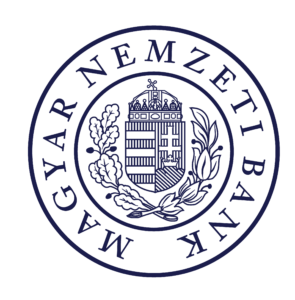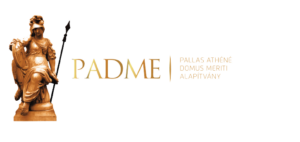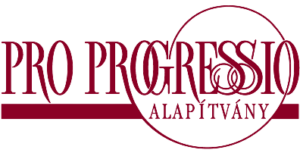How is it possible to retain the originality of the creator? What benefits do we gain from interdisciplinary projects? Which one is likely to take the leading role in the process of creation, humans or AI? These exciting questions will be discussed in the following interview conducted with associate professor Dr. habil. Anikó Grad-Gyenge of the Department of Business Law, and associate professor Dr. Bertalan Forstner of the Department of Automation and Applied Informatics. Both professors joined the residence programme with a background in music, and by combining their disciplines, they came up with a topic related to artificial intelligence, music and copyright law, a topic awarded to composer Andrea Szigetvári.
What inspired and motivated you to be involved in the project?
dr. Anikó Grad-Gyenge: Although I am a lawyer, and at this university you would typically have technical professionals, this collaboration neatly illustrates how important it is to understand one another despite speaking different languages. The residency programme is a superb opportunity to achieve this end. Even though the programme has been designed for professionals in the field of arts and technology, I was lucky to be able to join on account of having a strong background in music: I used to study musicology at the Academy of Music. My major focus of interest is copyright law and intellectual property where the prevalence of artificial intelligence and its creative nature poses real challenges. For this very reason, my colleague and I decided to design a topic where all our expertise (i.e. artificial intelligence, technology and music) can be combined, and which also has an important legal aspect. During the application period we were surprised to see how many musicians showed interest to this topic. We think that this collaboration may be useful for a number of reasons: musicians will get a better understanding of technology and vice versa, and also lawyers will gain a better insight into the legal aspects of both areas.
dr. Bertalan Forstner: Our department has had quite a few cooperations schemes in the field of arts. For instance, we run a programme with the Moholy-Nagy University of Art and Design (MOME) where students of BME and MOME join forces to create applications for museum pedagogy. We also have a collaboration with the Academy of Music; we work together to promote the Kodály method, and design digital tools to make the theory of music (solfeggio) more “consumable” for an age group that would otherwise not necessarily be open to such topics. We have also had a research cooperation scheme with the Jazz Department; we found some relationship between rhythm and the adaptational status of the brain, which means that one’s ability to keep the rhythm may improve their reading and writing skills and it may help prevent writing deficiencies such as dyslexia or dysgraphia. We also focus on artificial intelligence. The question is, who should be deemed as the author of computer-generated content: AI or the programmer? We have come up with a label for such creative processes: “musical breeding”.

What do you find interesting in this topic?
A. G-Gy.: Copyright law is a field specifically designed to acknowledge the unique and creative works of individuals. The involvement of artificial intelligence in the creative process will, for a while, reflect human thinking, decisions and creativity in the final product, but today even highly professional results can be generated by AI with very little human involvement. And it is not something we may see in the future, this is already happening. But eventually we will reach a stage where the creative end product, made as a result of a lot of thinking and effort, cannot be differentiated from those generated by purely AI. This may have several far-reaching consequences: if AI products are easier and faster to generate content, then they are more likely to cost less, and we may decide to devote less money to sustaining human creativity, so we may eventually have a smaller number of human works of art. Whether it is good or not is a matter of philosophy and ethics. And as for the relevant legal aspects: if we want to recognise human creativity, we need to specify who the creator is, and it is getting increasingly difficult to tell the difference.
B.F.: To define originality is a really exciting task; it is something we have not yet found a solution for. We would like to draw a parallel with software development, since we teach a lot of software design and writing at the automation department. We, developers, often rely on knowledge bases to be able to copy code snippets for new technologies. In other words, whatever has already been elaborated will be encapsulated into the code. With GPT models one offers a set of codes and AI further develops it along some aspects. This is exactly why scandals erupt every now and then. Code breeders learn from what we feed them, so if someone puts up secret corporate code, it becomes part of the knowledge base of the model and corporate or trade secrets – which can be regarded as intellectual property – can be leaked. The same applies to music. AI music breeders work from elements they have been taught, which could easily be Beethoven or Wellhello, or whatever else. The questions is what legal status the newly built-in elements will have. As for music, we need to ask ourselves how we can determine which of the motifs, rhythms or harmonies used by AI are being recycled. These are extremely interesting questions which may, perhaps, be answered, but even if not, the processes discovered along the way may be equally thrilling.
How are you planning to share the workload in the project?
A. G-Gy: Fortunately, composer Andrea Szigetvári’s winning application describes a programme which allows all parties involved – including our students – to think about various issues. I find it fantastic that students of communication and economics can sit down with IT students or electric engineers and can design experiments and research studies together. What makes this project even more worthwhile is that it allows us to continue this collaboration for a whole year. Such cooperations may be possible within the framework of a conference or a workshop, but those last only for a few days. In this scheme, we will be able to reconvene and have a prolonged discussion.
B.F.: I have always enjoyed working on interdisciplinary topics which go beyond the boundaries of a single field such as engineering or information technology. Research is usually linked to some external objective such as training. I am in a lucky position because I have worked with lawyers and musicians before, so this sort of collaboration will be home turf for me. What I am really curious to find out is what set of values and way of thinking our project partners will bring along and how we can enrich one another. This process is not about us mentors receiving Andrea from the Academy of Music and telling her what she should do; we all expect to learn from one another. Our students are also likely to display novel views and will definitely bring in new perspectives that have not so far occurred to us, simply on account of the fact that we had been raised in different environments. So what I expect to have is some new food for thought that will open up new horizons.

What do you think about the relationship between the creator and AI? Can the latter take over the role of the creator?
A. G-Gy: I think that more attention will be paid to this issue in the future. It will be very interesting to see how this relationship will evolve. And the question may arise whether we will have to indicate if a text had been created by humans or generated by AI. It is still unclear how exactly these issues will be solved. But I am absolutely positive that arts, deeply rooted in our very existence, will never disappear because we will always want to use creative forms of expression. However, this entire field is expected to undergo profound changes and it will be our task to keep track of the changes and minimise social concerns. And, obviously, we will also change along the way. And since AI will be able to perform several chores for us more safely and cheaply, we will have time to do other things.
B.F.: I don’t think AI will ever be able to do that. It can generate works of art that may be labelled creative, provided we define creativity as linking previously unlinked areas i.e. in graphics or in music. As for me, I have experimented with several image generators and frankly speaking I would be happy to have any of those on my wall. I often remind my first-year students that we should not fret from AI taking someone’s work. We should look at this issue from a different perspective: artists, for instance, may utilise AI when they need to identify new common ground, and AI may also be applied to do the large-scale industrial work in the completion stage of the product.
Tímea Nagy, Orsolya Demjén
Highlighted picture: Tímea Nagy


